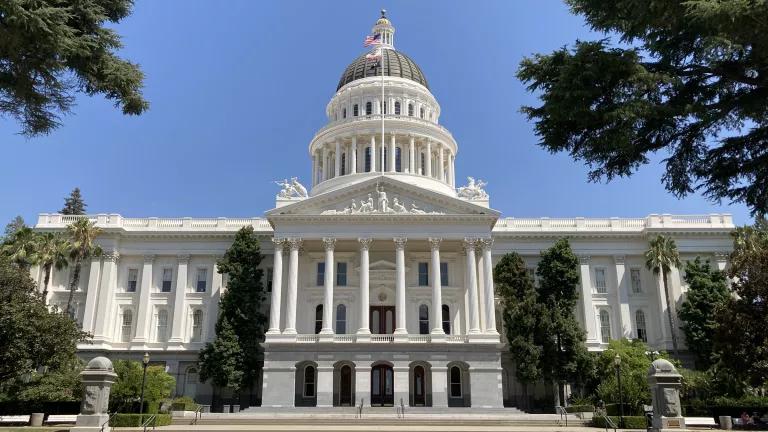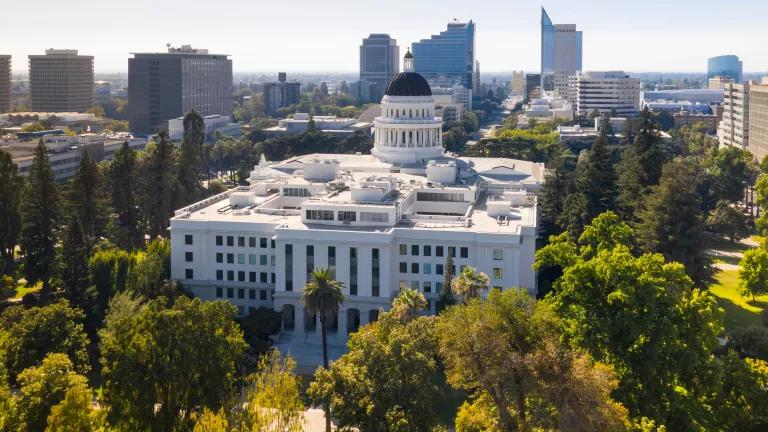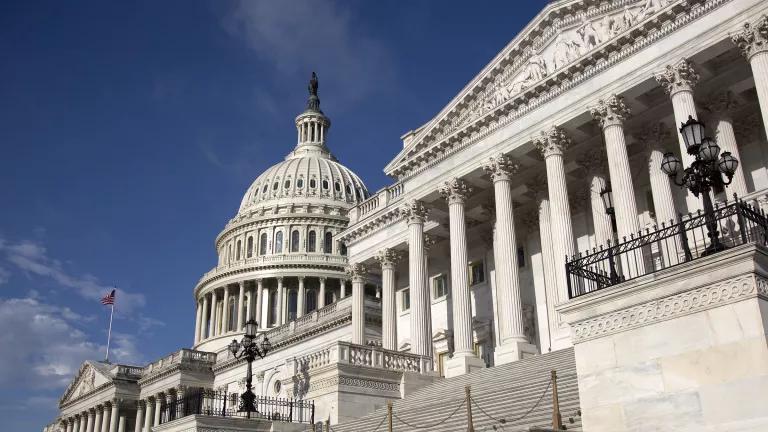Ten New Environmental Laws in California
The environmental community continued to chalk up wins in the state legislature despite another unusual year due to the COVID-19 pandemic and a gubernatorial recall election.

The environmental community continued to chalk up wins in the state legislature despite another unusual year due to the COVID-19 pandemic and a gubernatorial recall election. We successfully navigated video meetings and remote testimony to advance climate and health policies with the help of coalition partners, environmental champions in the legislature and a committed governor. We also faced some disappointing outcomes and fierce lobbying by powerful interests trying to thwart progress. As the climate crisis marches on, NRDC and our partners will continue to push state leaders for bold policies that can become models for other jurisdictions. There is always more work ahead, but it’s also important to reflect and mark the progress we’ve made. Below are ten key bills that passed the legislature and were signed by Governor Newsom in 2021. Most of these new laws take effect in January 2022 except where noted.
Climate

SB 596 (Becker) requires the California Air Resources Board to develop a comprehensive strategy by July 1, 2023 to reduce the carbon intensity from cement use by 40 percent from 2019 levels by 2030 and to achieve carbon neutrality in this sector no later than 2045. Read more.
AB 525 (Chiu) advances responsibly developed offshore wind. The bill will jump-start California’s process for construction of offshore wind as part of the state’s clean electricity mix in a manner that doesn’t harm fragile marine ecosystems and biodiversity. Read more.
SB 339 (Wiener) establishes a pilot program to test road user charges that will be adjusted for vehicle efficiency instead of a flat fee. By encouraging vehicle efficiency, this program can become a key strategy to cut global warming emissions and dangerous air pollution. Recommendations for the design of the pilot program are due to the Transportation Agency by July 1, 2023. Read more.
Protecting communities from pollution

Most microwave popcorn bags on store shelves are made with PFAS chemicals
AB 1200 (Ting), the Safer Food Packaging and Cookware Act, will protect our food, health, and environment by banning the use of toxic “forever” PFAS chemicals in paper-based food packaging and require disclosure of chemicals like PFAS and bisphenols in cookware. The ban takes effect on January 1, 2023. Read more.
SB 47 (Limon) helps clean up abandoned oil and gas wells that pose significant risks to public health and the environment. Read more.
Reducing single-use plastics

AB 1276 (Carrillo) – expands upon the state’s straws-upon-request law to include other single-use food accessories such as utensils and condiment packets.
SB 343 (Allen) – prohibits the use of the “chasing arrows” symbol on plastic products unless they are truly recyclable. The bill’s provisions must be in effect by January 1, 2024. SB 343 will help consumers make informed choices about the products and packaging they buy. Read more.
Racial justice

Anthony Bruce, the great-great-grandson of the original owners of Bruce's Beach, holds up SB 796 after Governor Gavin Newsom signed it into law on September 30, 2021.
SB 796 (Bradford) – allows the County of Los Angeles to return land in Manhattan Beach, known as Bruce’s Beach, to the living descendants of the owners from whom that land was wrongfully taken in the 1920s simply because of their race. Read more.
Safe and climate-friendly streets

AB 43 (Friedman) – requires that cities take into account the presence of vulnerable groups, including children, seniors, the unhoused and persons with disabilities when setting speed limits, and would permit cities to reduce speed limits on streets with a track record of traffic safety issues.
AB 773 (Nazarian) – helps limit cars on local streets and create safe outdoor spaces for recreation by permanently authorizing “slow streets.” Read more.
Looking Ahead
As we prepare for legislators’ return to Sacramento on January 3, our team and other environmental and public health advocates are working through a fair bit of unfinished business from 2021, and crafting new bills and state budget proposals including:
- Add concrete to the state’s Buy Clean program, to better account for its embodied greenhouse gas emissions, provide incentives for the most climate-friendly products, and align state purchasing with our climate goals (SB 778, Becker)
- Require California corporations, financial institutions and insurers to assess and report climate-related financial risks to the state in order to plan and account for these risks (SB 449, Stern)
- Double down on California’s climate ambition and address barriers to reaching current clean energy targets
- Transition our cars, trucks, buses, and vehicle fleets to zero-emission, and ensure that low-income people can access clean vehicles
- Ensure that the state’s transition to a zero-emission future centers equity and creates quality, domestic jobs
- Enable the construction of more affordable housing and climate-friendly neighborhoods by eliminating unnecessary parking requirements
- Make our neighborhoods safer and more welcoming for pedestrians and cyclists
- Improve water efficiency, affordability and access to clean drinking water
- Improve drought preparedness and climate resiliency
- Protect Californians from toxic “forever” PFAS chemicals in the products we use and from lead in drinking water
- Ensure strong implementation of Governor Newsom’s 30 x 30 executive order to conserve 30 percent of land and waterways by 2030 and increase access to nature for all communities
- Finalize strong rules to require health protective setbacks from new oil wells and pollution controls on existing wells. Phase out offshore and neighborhood oil drilling, and clean up all orphaned and abandoned wells throughout the state
- Help low-income communities and communities of color to better cope with extreme heat with community resilience centers and upgraded, zero-carbon cooling in their homes
- Ensure a robust and inclusive planning process for offshore wind so that it can be built quickly, with minimal impact on marine ecosystems
- Reduce the use of toxic pesticides that harm bees and our health; help small and socially disadvantaged farmers transition to organic production; and increase investments in just and resilient food and farming systems
In addition, we look forward to the passage of President Biden’s Build Back Better agenda without further delay. The Build Back Better agenda will provide multiple climate and societal benefits for California and includes funding for electric vehicles and charging infrastructure, water infrastructure, orphan well cleanup, and more.
In January, Governor Newsom releases his proposed budget giving us a window into the administration’s funding priorities. With another anticipated budget surplus, we are urging state leaders to increase investments in key environmental, climate justice, and public health priorities.
We’re also already looking forward to November 2022, when California voters will have a chance to support a ballot measure to curb single-use plastics and ensure that many of our plastic products are recyclable or compostable. Read more here.
As we close the books on this year, we celebrate progress toward a healthy and equitable California. And we are ready to bring about even bigger victories for our environment and communities and affirm California’s leadership for other states, regions, and countries.



